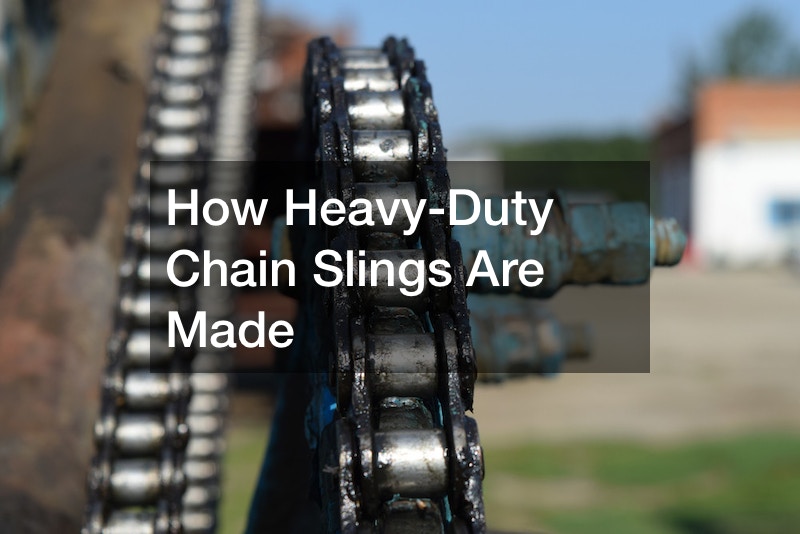How Heavy-Duty Chain Slings Are Made

In the realm of lifting tools, heavy-duty chain slings emerge as versatile and indispensable components, undergoing a meticulous manufacturing process to ensure robustness and reliability. The creation of these heavy-duty chain slings, measuring up to 20 feet in length, begins with the utilization of premium grade 80 and grade 100 alloy steel chains.
The manufacturing journey unfolds in a drum, where skilled craftsmen meticulously assemble each sling. Equipped with grab hooks on both ends, these heavy-duty chain slings undergo a cold-cutting process using a high-pressure hydraulic cutting machine.
This technique ensures a clean severance of the chain, eliminating the risk of heat damage that can occur with cutting torches.
Attention to detail continues as the final grab hook is installed, securing the load pin with a keeper. Every heavy-duty chain sling, whether mechanically assembled or welded, undergoes rigorous tracking until its retirement. An identification tag, featuring vital information such as size, link details, safe working load, and an RFID chip, is affixed to facilitate monitoring and occasional repairs.
Quality assurance reaches its pinnacle through proof load testing, employing a hydraulic incline proof testing machine capable of exerting up to 220,000 pounds of force. This meticulous testing ensures that the heavy-duty chain sling can stretch between five to ten percent under a calculated load, subjecting it to forces surpassing normal usage conditions and revealing any potential weaknesses.
Crafted in various configurations, including 1, 2, 3, and 4 leg combinations with diverse hook types, these heavy-duty chain slings cater to a spectrum of lifting operations. Understanding the intricate craftsmanship behind these lifting tools sheds light on the meticulous standards adhered to in their production.
.







